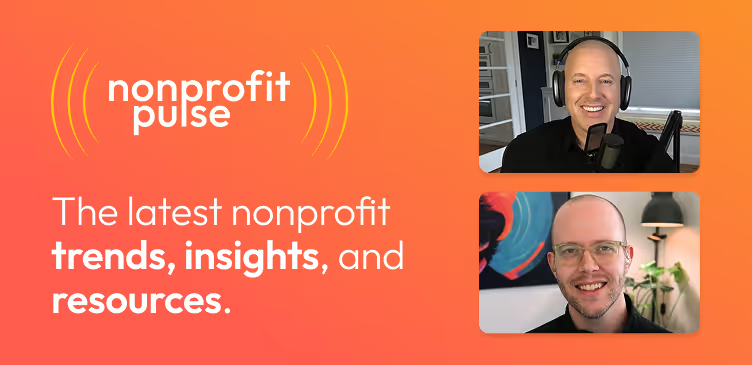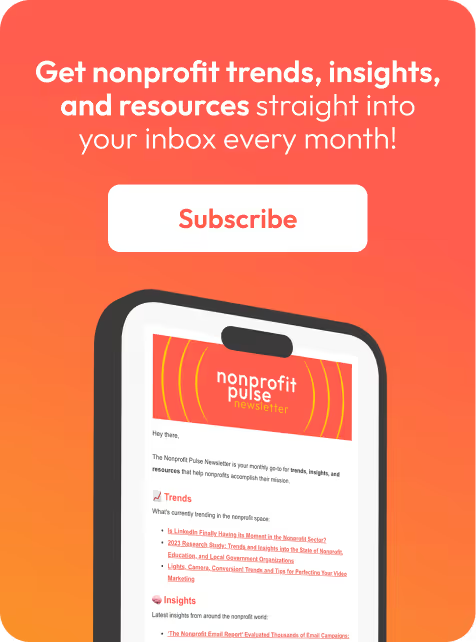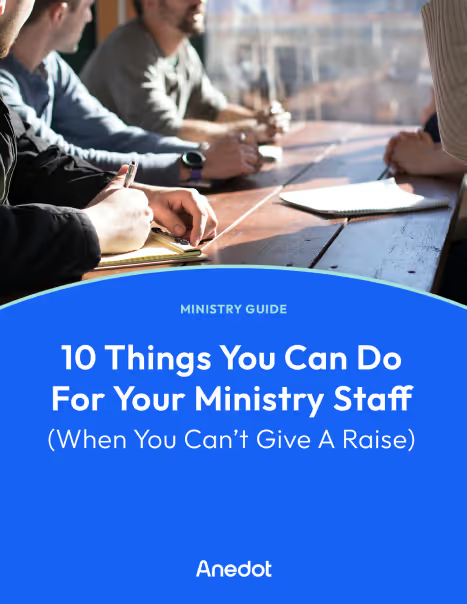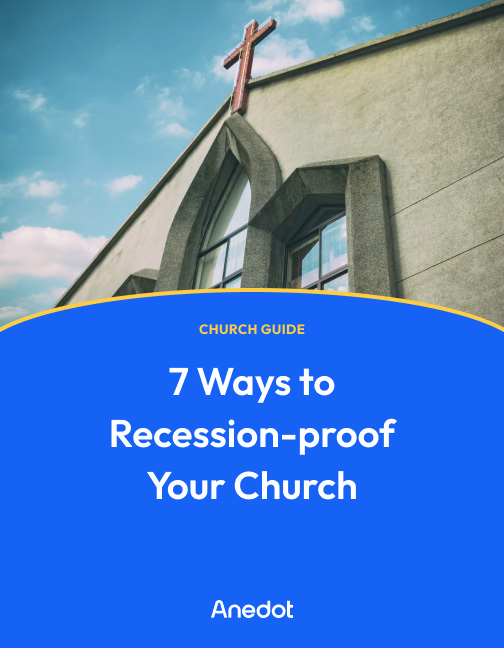A robust nonprofit communication strategy is essential for every organization, regardless of the size of your team or the work you do.
And if you’re like most nonprofits, every dollar and every minute is valuable.
Even with few resources, your nonprofit can create and utilize a communication strategy that helps you build your identity, earn a loyal base, increase your revenue, and drive growth.
In this article, we walk you through how to build a nonprofit communication strategy that will help your organization thrive.
What is a nonprofit communication strategy?

A nonprofit communication strategy is a custom plan to engage with and reach out to your organization’s stakeholders.
Your communication strategy fosters connection with donors, media, volunteers, beneficiaries, and more.
It’s more than simply a distribution of information; a communication strategy is built specifically to cause action that supports your nonprofit and those you serve.
An effective nonprofit strategy should be measurable and scalable to the growth of your organization. As you grow, your strategy should seamlessly grow and evolve with you.
Building a communication strategy with growth in mind empowers you to easily adapt as goals are met or priorities shift.
How to build an effective nonprofit communication strategy

A successful communication strategy requires thoughtful planning and intentional execution.
Below are the action steps you must take to build your nonprofit communication strategy.
1. Define objectives

First thing’s first: what do you want to accomplish?
At the creation of your strategy, your team should set benchmark goals that allow you to track your efforts.
In doing so, you can measure what works and what needs to change to help you reach those goals.
Popular nonprofit communication strategy goals include the following:
- Establish branding and story
- Raise awareness of organization and/or the cause
- Engage with larger audiences
- Increase financial support
When you begin defining your goals, they will probably be broad like the ones we listed above. But you should then narrow them down to specific, concrete goals.
Include timeframes for each target as well as a point person who is responsible for tracking and executing those goals.
Specific goals are straightforward and allow you to take actionable steps to see them through.
Every nonprofit will have unique communication objectives. Establish them, then revisit your goals regularly to determine the effectiveness of your communications strategy.
2. Know your target audience

Once you define your communication strategy objectives, identify your target audience.
By knowing your audience, you can curate a communication strategy tailored to your supporters.
The broader your messaging, the less effective. Donors give to causes they feel connected to.
Engaging and retaining donors begins with knowing who they are, what moves them, and how to effectively communicate with them.
Conducting donor research gives you a firm grasp on your audience. Through this research, you identify a person’s interests, wishes, and desire to support your mission.
Building target personas offers a different perspective on donor and audience identity and empowers your team to create effective communication and messaging for your nonprofit.
When creating personas for your ideal supporters, consider the following:
- Age, gender, location
- Financial status
- Theological beliefs or faith affinity
- Donation history
- Personal and professional aspirations
- Appeal of your nonprofit
Knowing your audience allows you to create communications that win them to your mission.
3. Create and communicate your identity

You must clearly and concisely communicate who you are. Show your audience your vision, your mission, and your values.
You must have a concrete understanding of your nonprofit identity so you can communicate it to your audience in a way that engages them and compels them to action.
You know the importance of your work. How can you present yourself in a way that causes others to believe in your mission too?
Devote time to solidifying your identity. You will come back to this again and again as you evaluate and revise your communication strategy.
4. Have clear messaging

Your messaging is directly informed by the above three factors. It should be simple, easy to understand, and consistent.
Your nonprofit’s messaging boils down to the high-level point you’re trying to convey.
It’s a specific idea you want your audience to remember and may include:
- Your mission
- Why financial support is needed
- A donor’s impact
These big ideas –– and many more –– make up your organization’s messaging and contribute to effective storytelling.
Donors, volunteers, and ambassadors trust you to be transparent and honest in your messaging.
As a nonprofit organization, your brand identity relies on honesty in your operations and in your messaging and storytelling.
Be clear in your communication. Donors and supporters should be able to articulate what you’re trying to communicate.
Simple messaging empowers your nonprofit’s advocates to identify with your mission and take on your vision as their own.
5. Create content

Your content is a crucial component of your nonprofit communication strategy.
Content includes:
- Blog articles
- Videos
- Interviews
- Social media posts
- Infographics, plus more
These avenues allow you to engage with a diverse audience in diverse ways.
Content is also a principal driver of your nonprofit’s SEO, which brings traffic to your site. Content is shareable, and you can repurpose content for different channels, saving your team time and resources in content creation.
Your content gives your audience recurring insight into your nonprofit’s mission and successes.
Strategic content creation engages and endears, which in turn brings in greater support for your organization.
6. Utilize appropriate channels

Once you’ve created content, it’s time to strategically distribute.
Identify the channels that will allow you to reach your target audience most effectively.
Social media sites, especially Facebook, Twitter, and Instagram, provide infinite touchpoints for engagement.
Email marketing allows you to connect directly and boasts incredible ROI.
As you consider where to distribute your content, evaluate your channels and ask how they’ll help you reach your communication goals.
Identify what success looks like for your nonprofit’s content distribution strategy. And while you’re at it, understand what failure looks like.
As with other aspects of your communication strategy, regularly revisit each step and determine if you need to alter your course of action.
7. Be consistent

The last and final step in your nonprofit’s communication strategy is one that’s ongoing: be consistent.
Nonprofit communication is never ending. Your audience wants to know what you’re working toward, your new goals, and your successes and triumphs.
Your strategy must include plans for continued engagement.
Cultivating relationships with donors, volunteers, and ambassadors doesn’t happen overnight. You must put in time and effort –– consistently –– to see fruit.
When you’re consistent with your engagement, messaging, distribution, and your storytelling, you’ll find that audiences are more likely to engage and identify with your nonprofit.
And when you can win your audience, your nonprofit and those your serve will benefit.
Conclusion

Your nonprofit communication strategy is the driving force behind engagement, raising support, and –– ultimately –– your success.
At Andeot, we know that nonprofits like yours rely on active, engaged donors to help you meet your goals.
We offer a host of tools and resources that empower you to continue the vital work you do for our communities both locally and around the world.
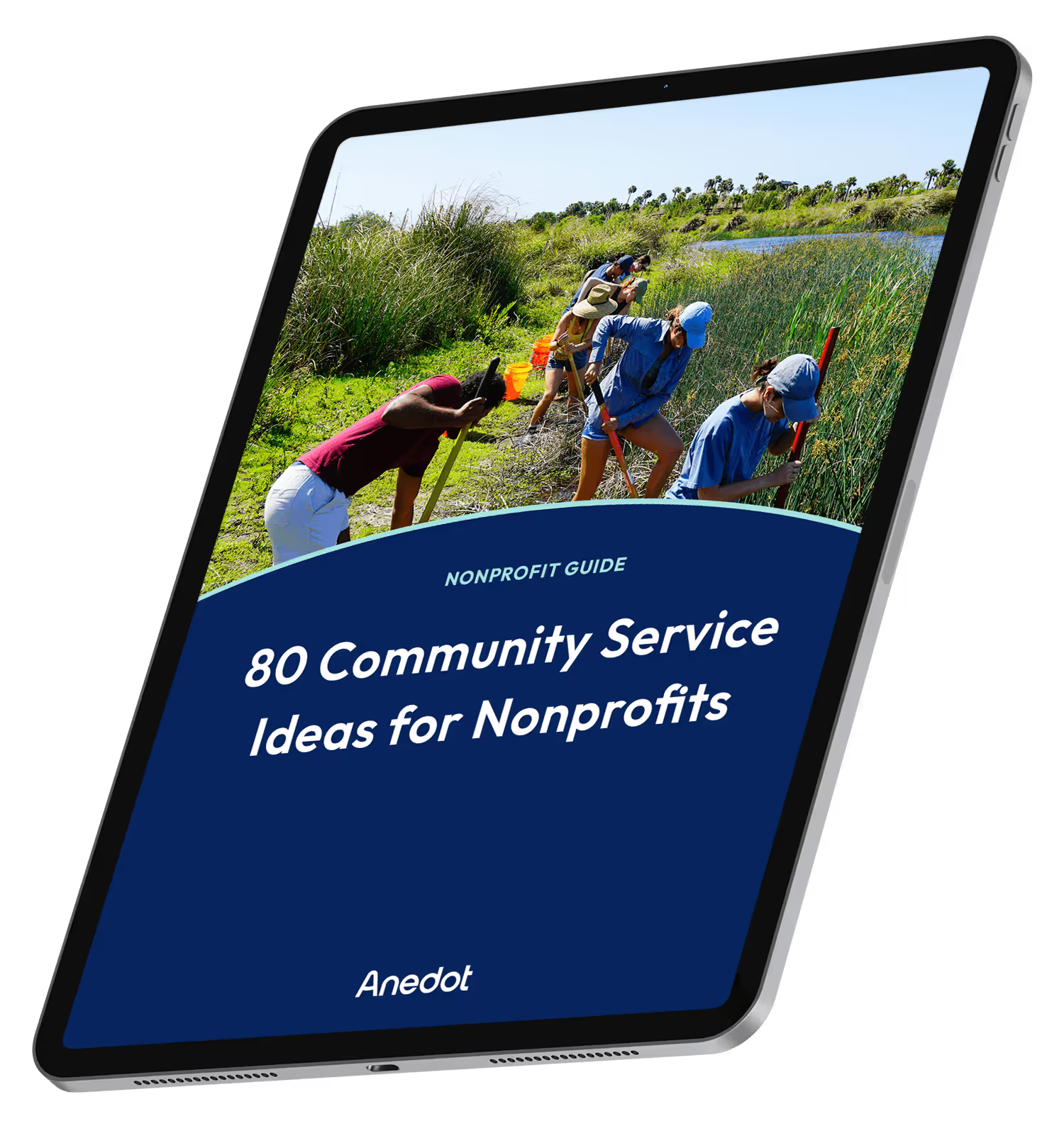
80 Community Service Ideas for Nonprofits

